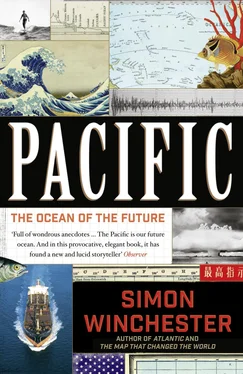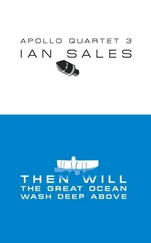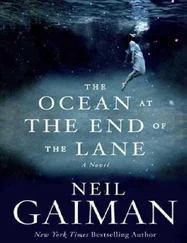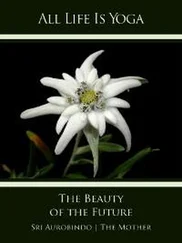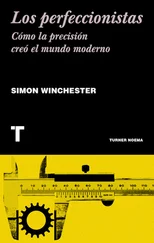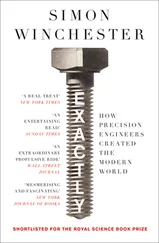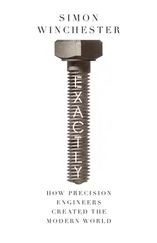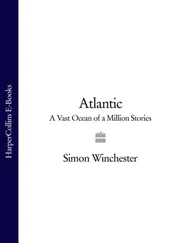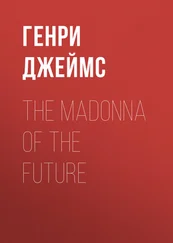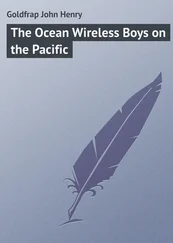Except, maybe, in Australia. The role that this one continental country will play in the future remains a mystery to most—in Australia as among its millions of neighbors. Australia is an overwhelmingly non-Pacific nation on the western edge of the ocean: Does it fit? Can it fit? Will it exert a regional force for good, in the short term or the long term, or ever?
Then there are the more technical considerations: of the Pacific as the fons et origo of the world’s weather patterns; of the Pacific as the bellwether of the environmental dangers the planet as a whole must necessarily confront; of the Pacific as the epicenter of most of the world’s lethally dangerous tectonic mayhem; and in part as a consequence of that, of the Pacific as the source of almost unimaginably vast undersea resources, which the world can plunder or preserve as it wills.
Then, most crucially of all, there is China—the world’s most populous nation, fast ascending to the ladder tops, to the summits, of almost every measurable feature of modern humankind. This proud and ancient and imperturbable nation lies on the far side of the Pacific from America, the most powerful nation the world has ever known; it is easy to imagine that both are now glissading toward a rivalry and a possible confrontation that could easily end less than well for either party.
And then there is the sea itself, the fathomless expanse of vastness—of Robinson Jeffers’s “staring unsleeping Eye of the earth”—which the islanders know and care for, even if so many outsiders manifestly do not. The Pacific Ocean—now almost freed from its former European control, yet brimming with new disputes, a region that is tectonically and meteorologically dangerous—is in serious environmental peril, is ringed with nations undergoing immense internal change, is unimaginably busy with commerce, has come to be at the forefront of science and self-discovery, but is at the same time also peopled by many clinging tenaciously to its old ways, as well as by civilizations, East and West, that seem steadily to be beginning to understand one another, and all this is occurring in a setting of philosophical and spiritual renewal and among fantastic yet threatened beauty.
It is the most turbulent ocean in the world, and an expanse of sea that should be central to all our thoughts. Is the ocean to be a place of coming war? Is it to be our eventual savior, a place so beautiful and fragile that its sheer vastness will one day demand that we pause in our careless and foolish behavior in the rest of the world? Or will it be something in between: a pillar of hope and example and good sense poised between East and West, on which, for good or ill, we construct humanity’s future?
The book that follows is an account of this modern Pacific, the story of the development of the ocean in the sixty-five tumultuous years that began on January 1, 1950.
1Statistics bear out the easily forgotten reality that whites— haoli , in the vernacular, a word uttered with some disdain—are a minority on the Hawaiian Islands. Their 336,000 (in 2010) are matched by almost half a million from countries around or within the Pacific Ocean, including 200,000 Filipinos and 185,000 Japanese. Eighty thousand only are native Hawaiians.
2Tsingtao beer, its brewery long overseen by a German brewmaster, remains the most visible reminder of the kaiser’s historic influence in eastern China. While the beer retains the old Wade-Giles transliteration of its name, the city itself is now restyled Qingdao.
3There can be few more impressive examples of German engineering than this eighteen-thousand-ton, thirty-two-knot (and exceptionally beautiful) warship, since she survived not only innumerable strikes by RAF bombers during the war, but also two nuclear tests in the Bikini atoll lagoon, where she was placed as a target for one air-dropped bomb and for a massive underwater weapon called Helen of Bikini . Still floating after the second test, but fiercely radioactive—all her crew would have died—she was towed to Kwajalein, developed a leak, and capsized, her enormous guns falling out of their barbettes and onto the seafloor. One of her screws has now been placed in a museum; the others remain visible at low tide. Prinz Eugen will never be salvaged, however, since her steel is still lethally contaminated.
AUTHOR’S NOTE: ON CARBON

New Year’s Day 1950 was a Sunday, and by and large, as the clocks ticked and chimed and boomed their way into the first year of the century’s fifth decade, the world seemed to have settled into a fairly stable place, with memories of the Second World War starting to fade, and scant suggestion of any of the turmoil soon to come.
The Japanese, still busily repairing their country and still occupied by American forces, had some small reason for good cheer that day, with the ending of their custom of declaring children to be one year old at birth and of everyone adding a year to his or her age each January 1. This change meant that all eighty million Japanese would not become numerically older on this day: a forty-year-old would wait until his next actual birthday before becoming forty-one. For a brief while that morning, all Japanese were said to have suddenly felt younger.
There was smaller cheer for New Yorkers. The canned music that had flooded the concourse of Grand Central Terminal for the previous three months, and that had whipped silence-loving commuters into a mutinous fury, was turned off, and forever. Riders on the New York Central regained their sanity; the calm of the everyday hubbub was resumed. For a while, some relieved New Yorkers were said to feel suddenly younger, too.
And in England, a teapot lid maker named Elizabeth Hulme and a man from Lancashire named James Jackson, whose job was listed as “mule spinner,” said to be a textile-related occupation, were each given awards for the contributions they had made to these crafts, in a ceremony at Buckingham Palace. In Britain nothing else of great significance occurred, according to the day’s newspaper accounts.
Beyond, in the outside world, most of the men of note then charged with running the world could count on remaining some time yet in power. Truman, Atlee, Stalin, Adenauer, Franco, Tito, Perón—even comparative newcomers such as Kim Il Sung and Mao Zedong—were all, for now, lying easy in their beds. There were similarly complacent kings and queens and princes in abundance, from Egypt to Tonga and Kathmandu, together with an emperor in Japan, a shah in Persia, and a grand duchess in Luxembourg, mostly respected, occasionally revered, and all, for now, reigning in comparative comfort.
Yet there were shifts in the wind. The grandest of the world’s monarchies was still England’s, with the incumbent, King George VI, still technically able to say that he reigned over a quarter of the world’s population, with his empire still in rude good health. Except that just three weeks into the New Year, his hold on one of those dominions would weaken when, as expected, Jawaharlal Nehru proclaimed India to be a republic. And farther still around the world, a little-known Vietnamese Communist named Ho Chi Minh would, at the year’s beginning, commence a series of negotiations with China and the Soviet Union that would eventually ensure that the French would be turfed wholesale out of Indochina, and would leave Asia forever.
But these small hints aside, if cracks were beginning to appear in the settled order of the world, they were only hairline, visible to few, and troubling to almost no one.
Except, that is, for one development that is still marked indelibly on that New Year’s Day of 1950, and that came to be regarded in a pair of ways: as being, first, of the gravest moment and, second, of lasting, perhaps even everlasting, scientific significance.
Читать дальше
